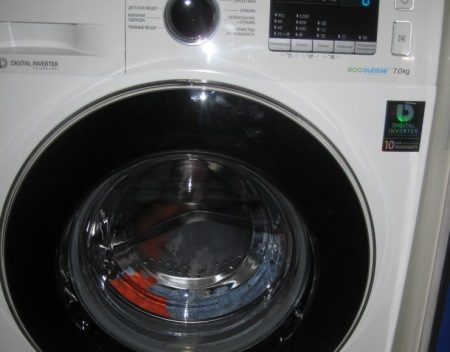How to drain the washing machine?
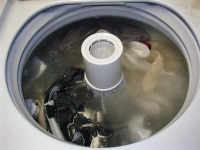
If you decide to stop the washing machine with a tank full of water, you often have to drain the water forcibly, otherwise, along with opening the door, a stream of water will rush at you. The easiest way is to put the mode "spin", in which the water begins to drain. Then you can turn off the washing machine, and when you unlock the door, you can safely open it.
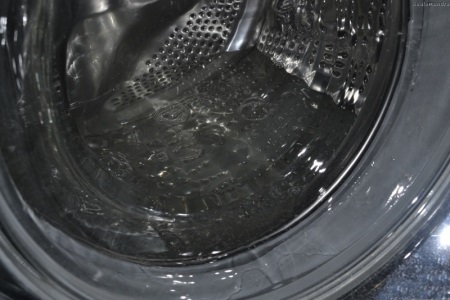
Breakdowns associated with the drain system - a common problem in the operation of modern washing equipment. This article will tell you what to do if after washing the water does not leave the tank.
Causes and error codes
The causes of such malfunctions are varied:
- The command is set incorrectly. Check the setting: you may have accidentally pressed the wrong buttons, and the device performs a task in which draining water is not planned.
- Drainage is not included in some programs. Make sure that you have not set one of these modes (for example, "Wool").
- Blockages are a major cause of drainage problems. Make sure that the hose through which you drain is clogged: small debris could get there. Sometimes the cause of the problem lies in the drain filter. Masters regularly find buttons, pins, coins and other small things there.
- The drain pump (pump) is also prone to clogs. This malfunction can be detected by ear: it is characterized by a rumble and crackling that appears just before draining or wringing the laundry.
- Debris can also clog the short tube that connects the drum and the pump, which is responsible for draining.
- Kinked hose. Check the condition of the drain hose. It is possible that there was a kink in it.
- Pump failure. If the pump shows no signs of life, it will have to be replaced. Leave the installation of this part to a professional.
- Breakdown of the control module. Every automatic machine has a built-in electronic "brain", which is responsible for the operation of all its parts and elements. Often the cause of the malfunction lies in its failure.
- Problems with the water level sensor. In this case, it incorrectly fixes the liquid level, determining it lower than it actually is. This also happens in cases where the weight of the loaded laundry exceeds the norm.
- Technical breakdowns. Drainage problems are often caused by wear and tear: check to see if one of the bushings is damaged or if the motor winding has burned out.
- Incorrect connection to the drain. The problem with the escape of water appears if the drain hose is not properly connected to the sewer. In this case, you can not do without the help of a master.
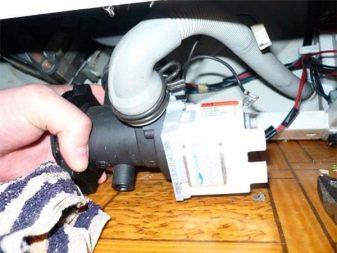
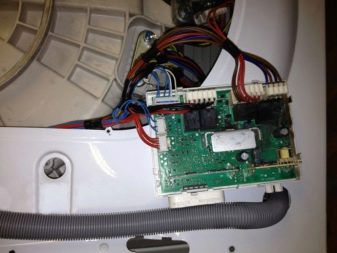
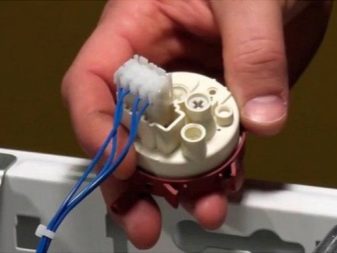
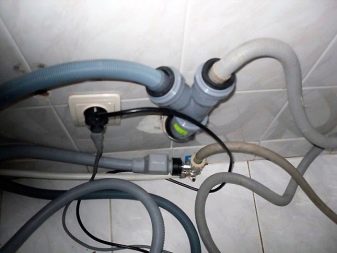
In modern washing machines, each error or breakdown is indicated by an alphanumeric code, which lights up on the display of the technical device.
Problems with the drain in the washing equipment of various brands are denoted by the following codes:
- For Samsung machines - E2;
- Zanussi and Electrolux machines - EF1;
- for Whirlpool washing machines - F03;
- for Ariston and Indesit machines - F05 or F11;
- Siemens and Bosch products - F18, d02 or d03;
- Beko brand washing machines - H5;
- For technical means, manufactured by LG - OE.
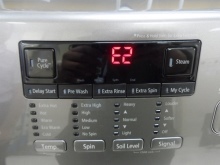
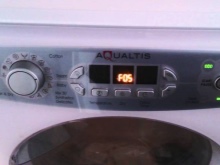
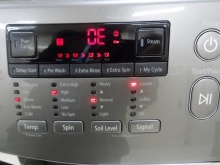
Methods of water drainage
Before looking for the cause of the problem, de-energize the washing machine and drain it; the volume of liquid inside sometimes reaches thirty liters. Depending on the type of technical device, choose the most convenient way for you to get rid of water.
New-style washing machine
In the bottom of the housing, find the emergency drain hose, place it in a basin (or other low container) and remove the safety valve. Drain the water. Then open the door and take out the laundry; you will spin it yourself.

If your washing machine does not have an emergency hose, drain the water through a special filter, located at the bottom of the cabinet, and which is a round shaped hole. Sometimes it is covered by a small panel. Slightly tilt the body back and fix it. Place a suitable container under it and gently open the drain filter by removing the cover without excessive effort and sudden movements. If the filter is so clogged that it is impossible to open it, it is necessary to get to the drain pipe connecting the drum with the pump and drain the water through it.
The following method is effective for machines not equipped with a dump check valve: feed some water into the drain hose for 3-5 seconds, and then place the free end of the hose into the tank placed below the tank level. The difference in pressure will set the liquid in motion and the drum will empty.
You can visualize these ways of draining water in the video below.
An old style washing machine
In homes without central water supply and sewage system, preference is given to old-style machines, which belong to the activator type. Water is poured into such devices through the top, and drained through the drain hose, located at the bottom of the body.
You can remove water from the tank of the activator machine in the following ways:
- by tilting the design so that the liquid flows out over the edge;
- using a pump;
- by scooping out the water with a ladle or other suitable utensil.
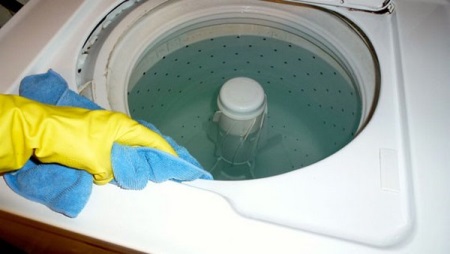
Troubleshooting
After getting rid of the water, look for the cause of the malfunction. Start with the drain filter. Clean it of debris and rinse it out. Inspect the pump, it is placed directly under the filter. If the pump is not clogged, return the filter to its original location.
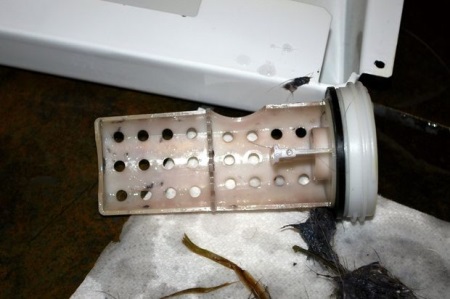
Examine the drain hose and siphon. Place one end of the hose into an empty container and run the wringer or set the water drain mode. The appearance of liquid indicates that a faulty drainage system is the cause of the problem. If water remains inside the machine, the problem is in the machine units.
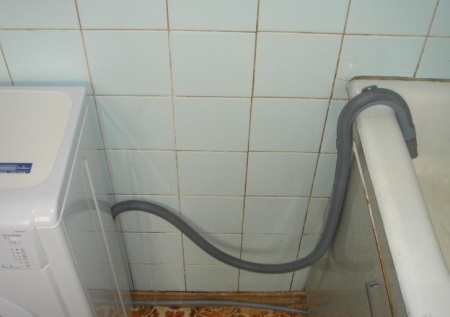
The obstruction of the pipe that connects the drum with the pump, also leads to a blockage of the drain. In this case, you need to disassemble the machine, clean all its connecting elements and check the condition of the drain pump.
If the cause of the malfunction is still not determined, examine the control module. Use a multimeter (tester) to check for voltage in the module. If the power supply is interrupted, the electronic unit will have to be replaced. This complex process requires skills and special training, so changing the module by yourself is not recommended.
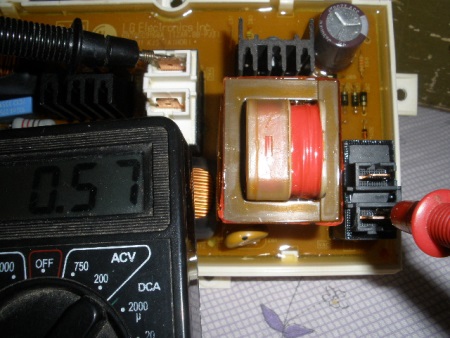
Tips
An attentive owner will determine the failure of the device long before the streams of water gush from the open hatch to the floor. There are a number of signs that tell about the violations that occurred in the drainage system. Often, the problem is signaled by a change in the sound of the running device: through the usual humming you will not hear the murmur of flowing water. Another obvious sign - the liquid remains in the tank even after the laundry is wrung out.
However, most of us do not monitor the washing process, so there are cases when problems with water discharge go unnoticed, and the "flood" catches us unawares. Don't lose your temper, close the hatch as quickly as possible and collect the water from the floor. De-energize the equipment and drain the water in any way you can.
